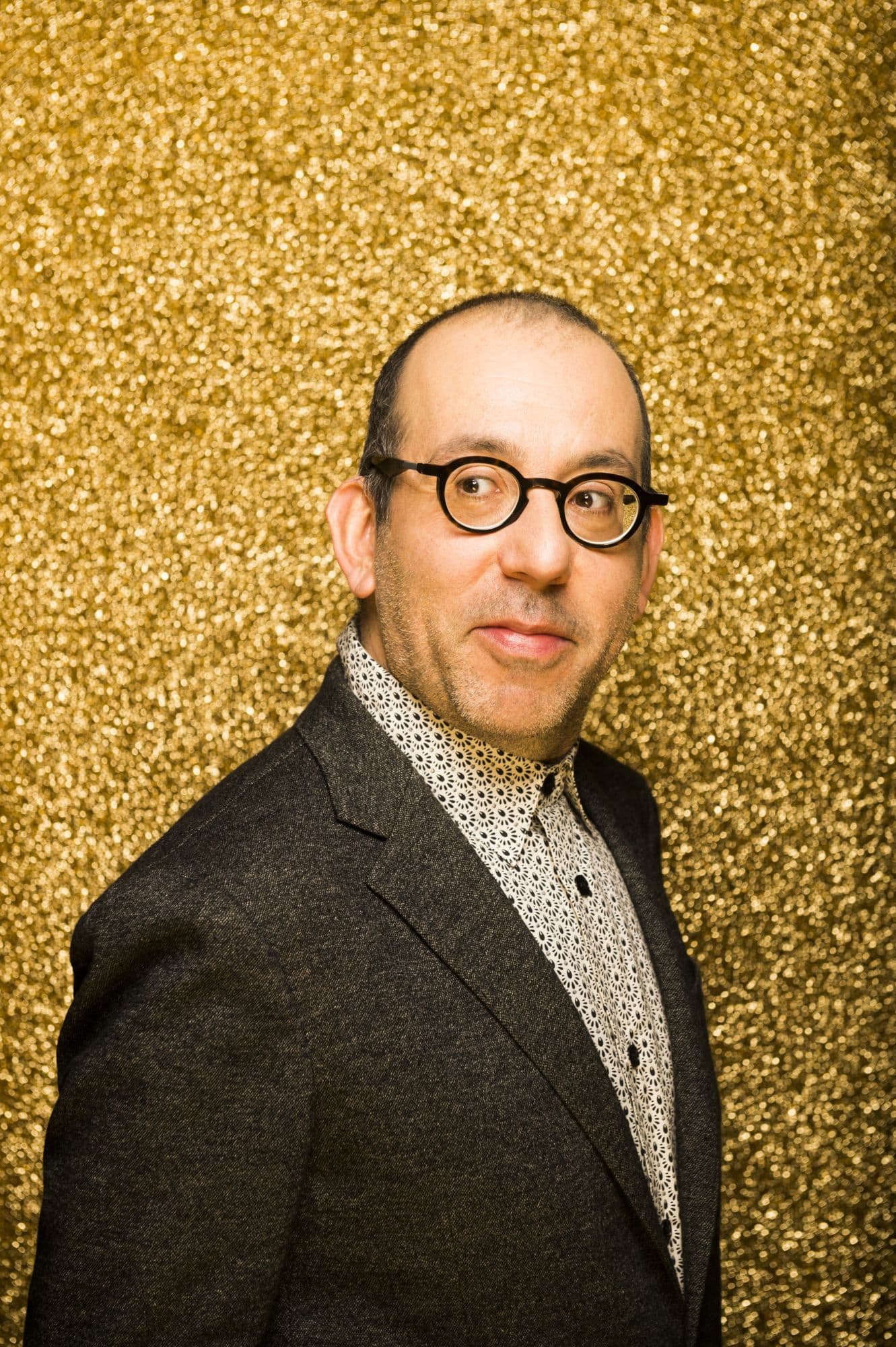Death is Not Negotiable
Director Barrie Kosky on Bohemian life, messy love and the cosmic dimension of the living room
Interview by Simon Berger
You’re staging one of the world’s most famous operas…
... which comes with a lot of challenges. For me, La Bohème is like The Magic Flute or Carmen. You have to ask yourself: what do I not want to do? I don’t like starting out with a negative, but with pieces like these pillars of the repertoire, it makes sense. And then, of course, you begin by looking at the opening measures of music—the incredible, slightly dissonant, colorful introduction. What is it saying? To me it feels like someone is opening the door to the 20th century.
But La Bohème is set in the 19th century.
Even though the premiere was in 1896, Puccini stands with both feet in the 20th century. The opening measures of this opera may be familiar to us now, but back then, beginning an opera like that was absolutely new. For me, La Bohème has a closer connection to a work like Alban Berg's Wozzeck than to Verdi's operas. The subjects are completely different, of course. But Wozzeck was a breakthrough, musically speaking, as far as the structure of the piece is concerned, and also in the choice of subject. I really see a similar sort of radical innovation in La Bohème. It’s a piece that looks forward, and it has an emotional richness and complexity we don’t always encounter in 19th-century opera. You’ll find that complexity in earlier operas—in Baroque opera and in Mozart, for example—but then it fell into the background. Puccini's interest in people is more like Mozart's in The Marriage of Figaro or Bizet's in Carmen. And he’s also like Leoš Janáček in using "realistic" text; Puccini’s music, like Janáček’s, reflects the rhythms and patterns of everyday language. This influenced every composer that came after those two. Their genius wasn’t in creating a carpet of orchestral sound with the voices layered on top, but in intertwining text and music together to form an inseparable whole. The result is an in-between world: between reality and dreams, between artificiality and organic naturalness.
Let’s go back to the challenges.
The next challenge is to push all those dozens of Bohème productions you’ve seen out of your mind and to get rid of all the clichés and conventions that have slipped into the piece over the years. You have to address the audience’s question: "What is it about?" Some people might say it's just sentimental nonsense—and I think that’s downright snobbish—but ultimately that's just a consequence of the clichés that have become attached to the piece.
So what is it about?
Death. After the joie de vivre of the guys in the opening scene, the bustling urban panorama of Café Momus, and all the little details of everyday life and love, death shows up at the end. And that experience hits these young people for the first time in their lives—a shockwave they will feel forever. Why has this piece been so enormously successful, across the generations? Is it because watching Rodolfo and Mimì fall in love at first sight is so touching? Both of them had previous love affairs and sexual partners. And that makes them interesting. This isn’t a Romeo and Juliet story, it's about a woman who is ill and who dies. It’s all very real, and the conclusion is so moving because we are witnessing the characters’ first experience with death. You never forget the moment you first become aware of mortality and death, like when a family member or a friend dies.
But we want love...
Of course, and this is what Puccini and his librettists did so ingeniously: it’s about death. Love is negotiable. Death is not negotiable. Puccini isn’t making a commercial for romantic love. If anything, he’s promoting the reality of love. This makes him completely relatable to people in the 20th and 21st centuries. What’s love like from Puccini's point of view? It’s so messy and chaotic! Love is usually messy in Puccini; just look at Madama Butterfly, Trittico and Manon Lescaut. This makes him more like Chekhov, Ibsen or Strindberg than Verdi or Wagner with their portrayals of sanctified love. This isn’t a criticism, it’s just a difference. Verdi's feelings are more abstract. You see this in the musical forms he uses, where the action is interrupted for several minutes at a time by arias or duets. Puccini’s music is more specific. And he’s not interested in queens or heroic myths. Instead, he says "I’m interested in the politics of the living room, the eroticism of the living room! These microcosms have their own poetic, cosmic dimensions; you don’t have to add anything poetic or cosmic to them!" Puccini shows us that love isn’t a Mies van der Rohe building, it’s more like a messy bedroom.
The poetry of everyday life.
You have to show that. And this is where the challenges of the rehearsals begin. Puccini wrote his operas with specific stage directions. Someone says, "Bring me a glass!" and then three or four bars follow for that to happen: the singer has to get up, go to the table, pick up the glass, and so on. All of this is depicted in the music. I don’t know any other major composer except Puccini who writes this kind of “prop choreography.” So I tell my team: "Don’t ignore it. On the contrary, celebrate it!" You can’t play this piece on an empty stage; it needs real places and objects.

But Paris isn’t “real” in your staging.
You think? Again, there’s the question of how we escape the cliché of marching bands and Christmas parades. We based our interpretation on the setting of the Café Momus. In Greek mythology, the god Momus—brother of Thanatos, god of death—is a critic, a faultfinder, a jester, taking different forms and shapes. In La Bohème, he gives his name to a place of drunkenness, which also references the Dionysian principle. So we’ve interpreted Paris and the cipher Momus as a feeling, a state of mind. It’s a sort of panopticon showing all of Paris—a fast-moving, excessive, surreal, joyful and tragic world—and condensing many places and aspects of the city into one.
The stage design is also inspired by technological developments of the 19th century.
The basic space consists of enlarged photographic plates, like the ones that came into the world with the invention of daguerreotypes. This technique was an early type of photography and remarkably high-quality images were created in this format, many of which still exist today. Before the invention of film, photographic plates were used, which faded over time because of the chemicals involved. We seized upon the idea of the erasure of pictorial memory, transience made visible.
In our production, the painter Marcello is an early photo artist, posing his models in front of drops. Bohemians were busy creating new types of art, and the revolution caused by this new world of images, thanks to Daguerre's invention, cannot be overstated. Today, photography is nothing out of the ordinary; we shoot photos on our mobile phones every day. But imagine the reaction in the 19th century when, for the first time, you could suddenly have images of people that were realistic down to the tiniest details, maybe even capturing images of the dead! It’s no surprise that there are cultures where people refuse to be photographed because they think they’ll lose their souls. The advent of photography in society was a huge revolution in how people related to the reality of life, time and death.
What is a bohemian?
It’s a way of life that existed long before Murger or Puccini, and not just in Paris. But in the 19th century, it came to have a big influence on culture and society. Young people began their lives with a period of experimentation, maybe as students or by trying out artistic careers and just trying to stay afloat. I think it’s important to take these characters seriously. Rodolfo and Marcello might come from a middle-class background, but at the moment we meet them they have no money. But they have talent; they’re aspiring artists. For the bohemians in this opera, Mimì's death is the decisive event that turns them into real artists with life experience.
Where does Mimì fit into this circle of bohemians?
The guys she meets are very different. Marcello is a young cynic. Rodolfo is often played as either a romantic hero or a seducer, but I think that’s a bit trite. I like that Rodolfo reveals something to Mimì at their first meeting: his inner, private thoughts and ideas. He opens his heart to her. I very much hope that we’ll be able to create a Rodolfo who’s a bit less cultured, more fragile, more impulsive. He’s not a would-be Don Giovanni; he’s not a baby Cavaradossi who’ll meet his Tosca later. Rodolfo is young and insecure. This becomes really clear in the third act; he doesn’t quite know what he wants, hence his frustration.
As far as Mimì is concerned, I don’t like seeing her interpreted as a coughing, passive virgin; she's a self-confident young lady having a good time with these guys. In the second act, they enjoy the high life together, having the time of their lives, and in the third act, she shares Rodolfo's confusion. Another important aspect of her character is shown in the way Puccini portrays Mimì’s death. She doesn’t sacrifice herself for a man, like a Wagner heroine. She dies a completely unspectacular death. No aria, no long suffering. This is very unusual, and it’s inspired.
The aspect of youth in this piece is often underestimated.
And it’s so important! So is Puccini’s compositional method: every note is exactly right, nothing is too much or too little and everything is distinct and direct. The young people say what’s on their minds. There are no masks or hide-and-seek games. Something else that’s rarely mentioned is that there are no parents! By that, I mean that all the characters are about the same age. There are no kings, no families, no court; they’re just living together in their own world—and suddenly death is in the door.








